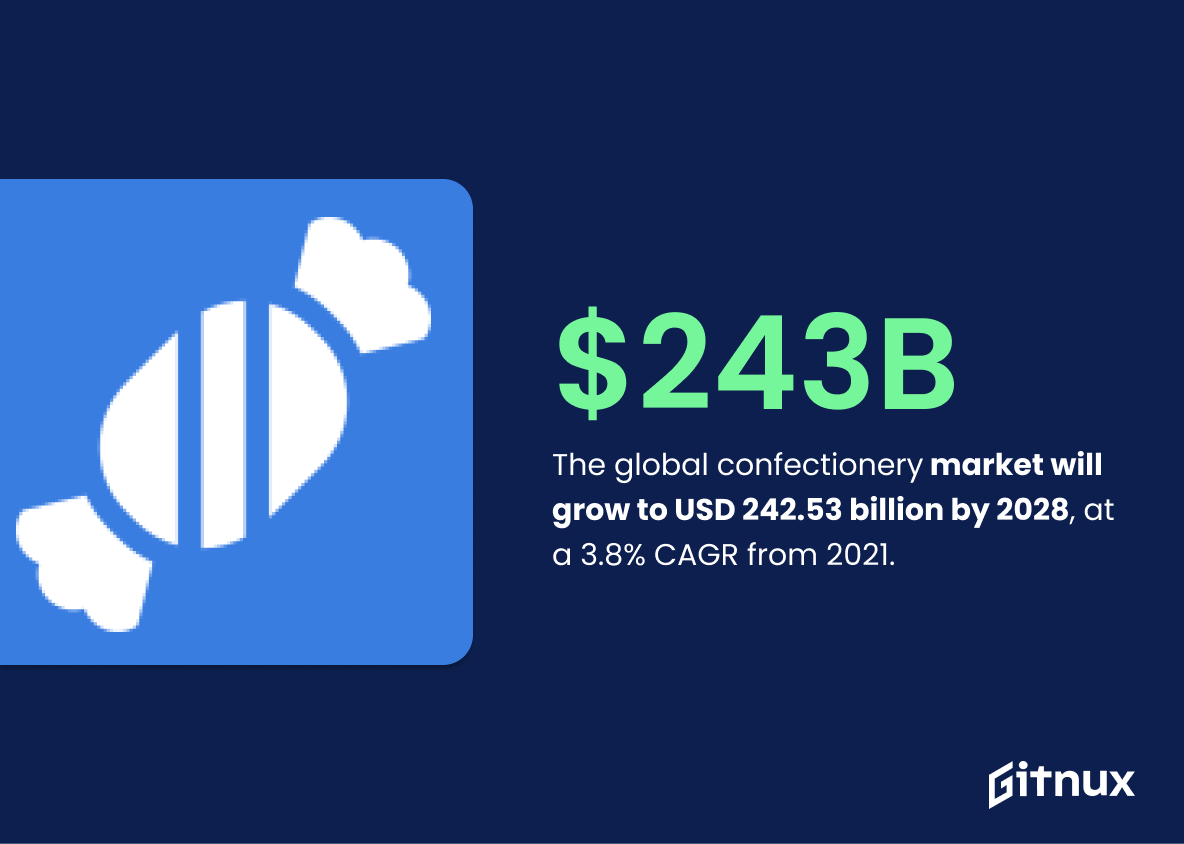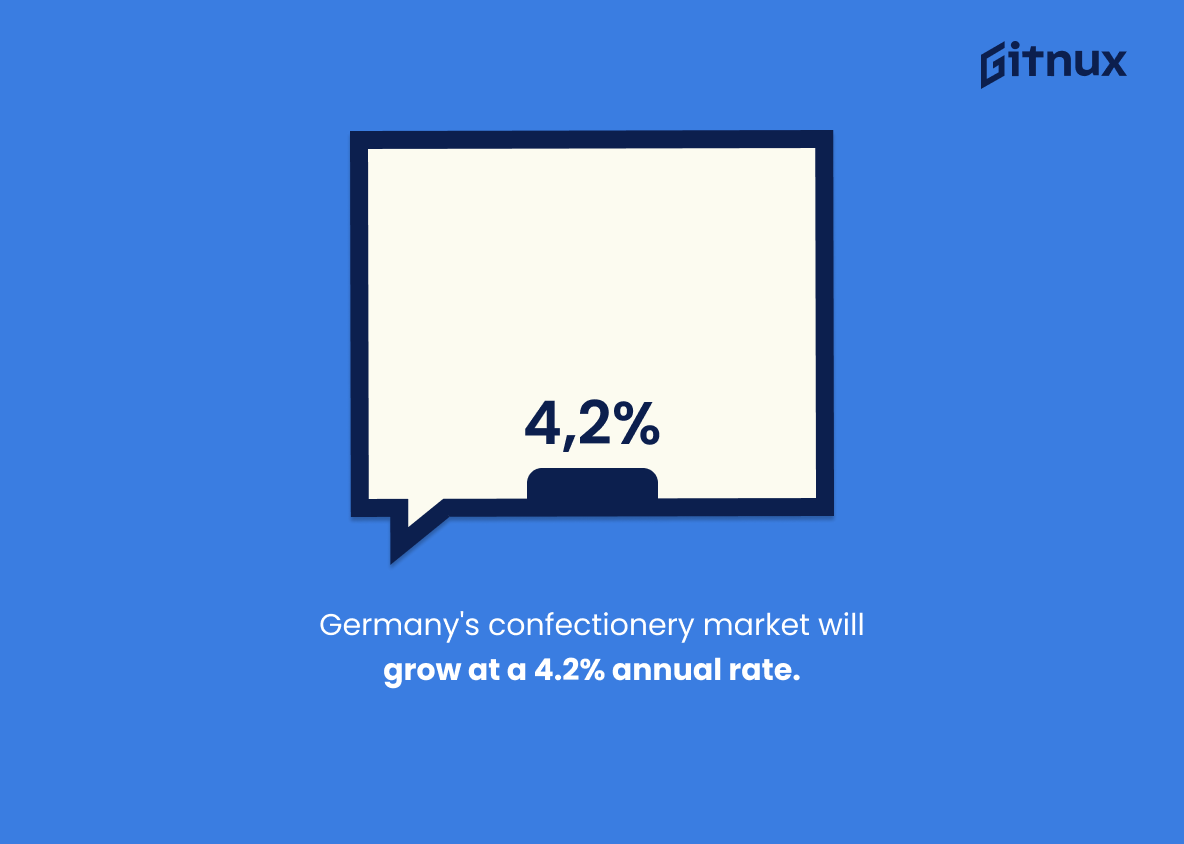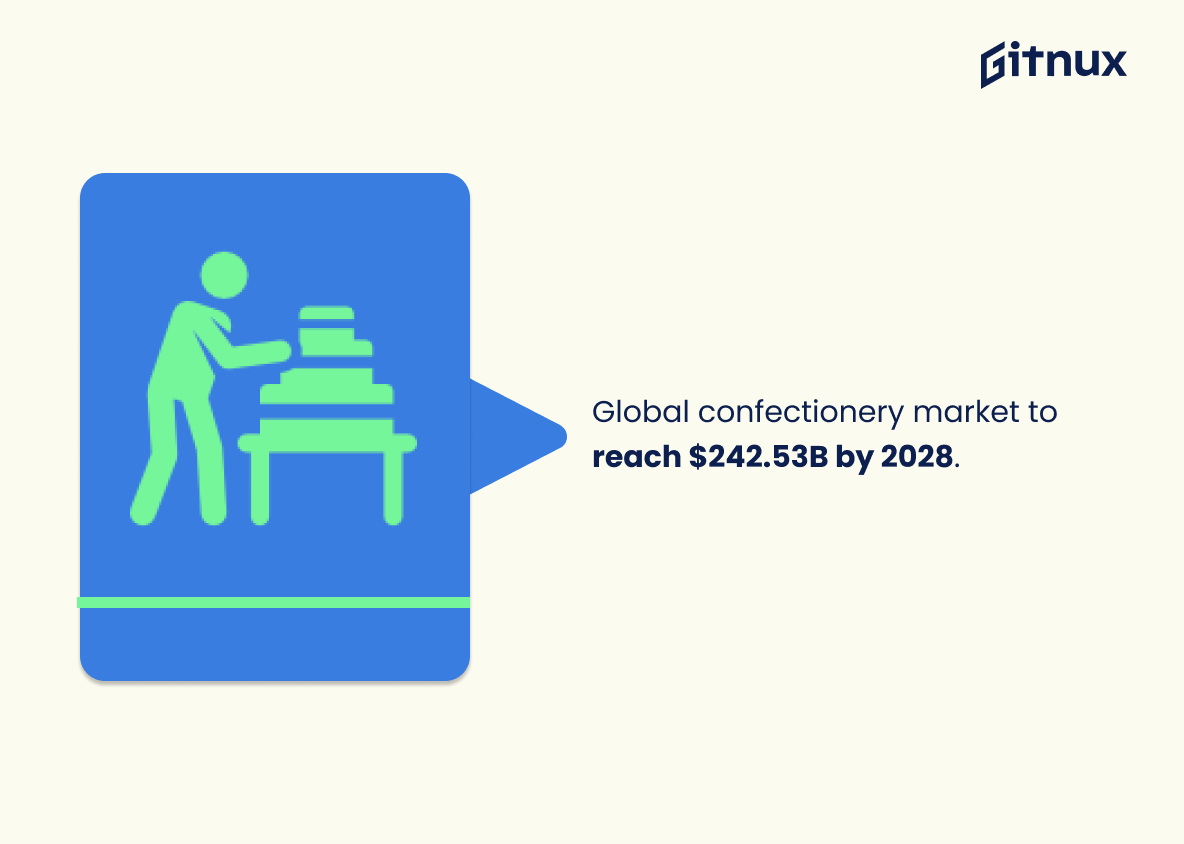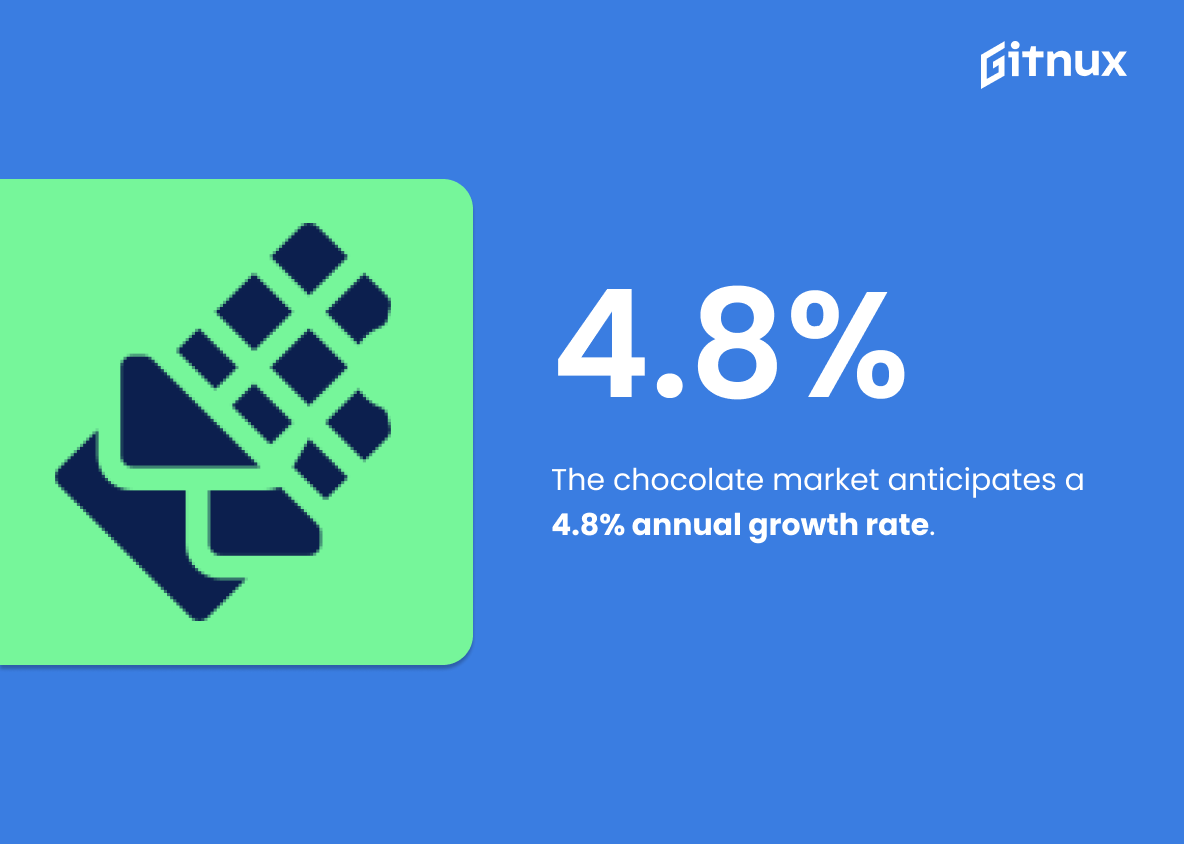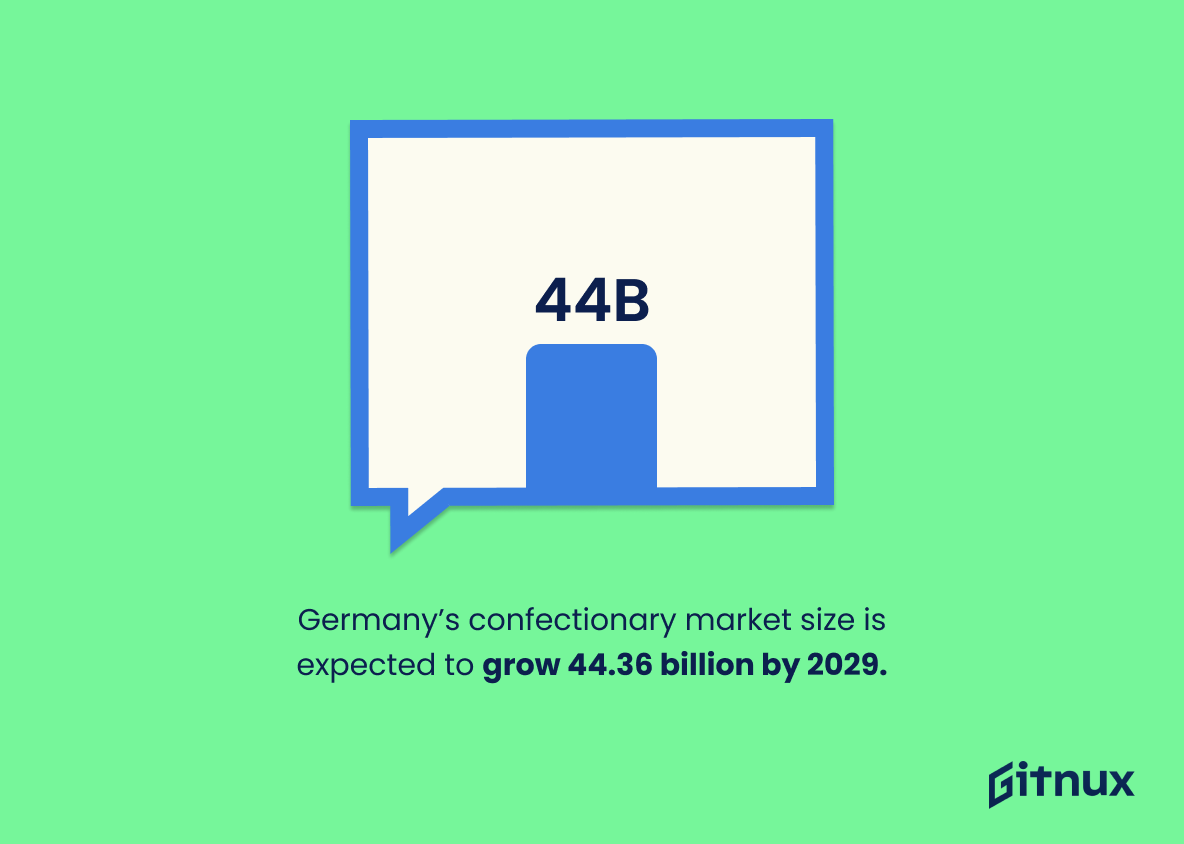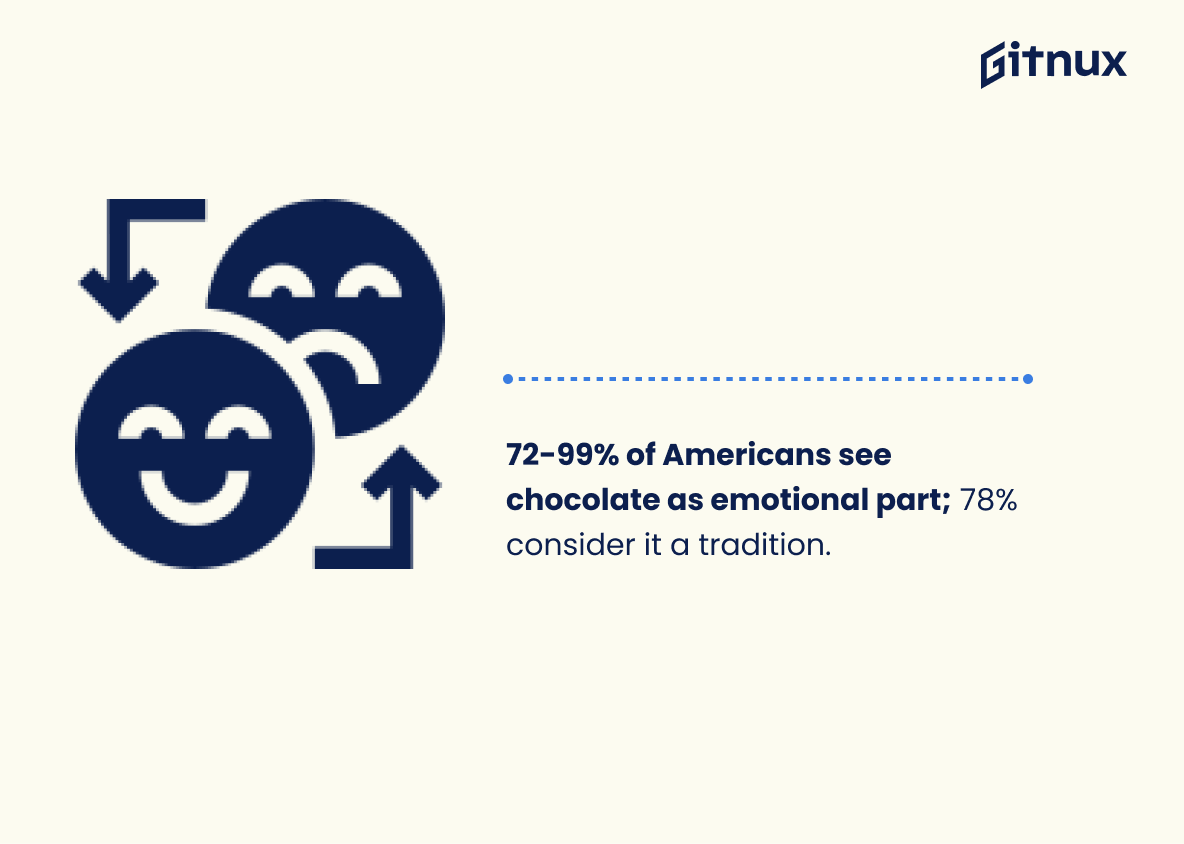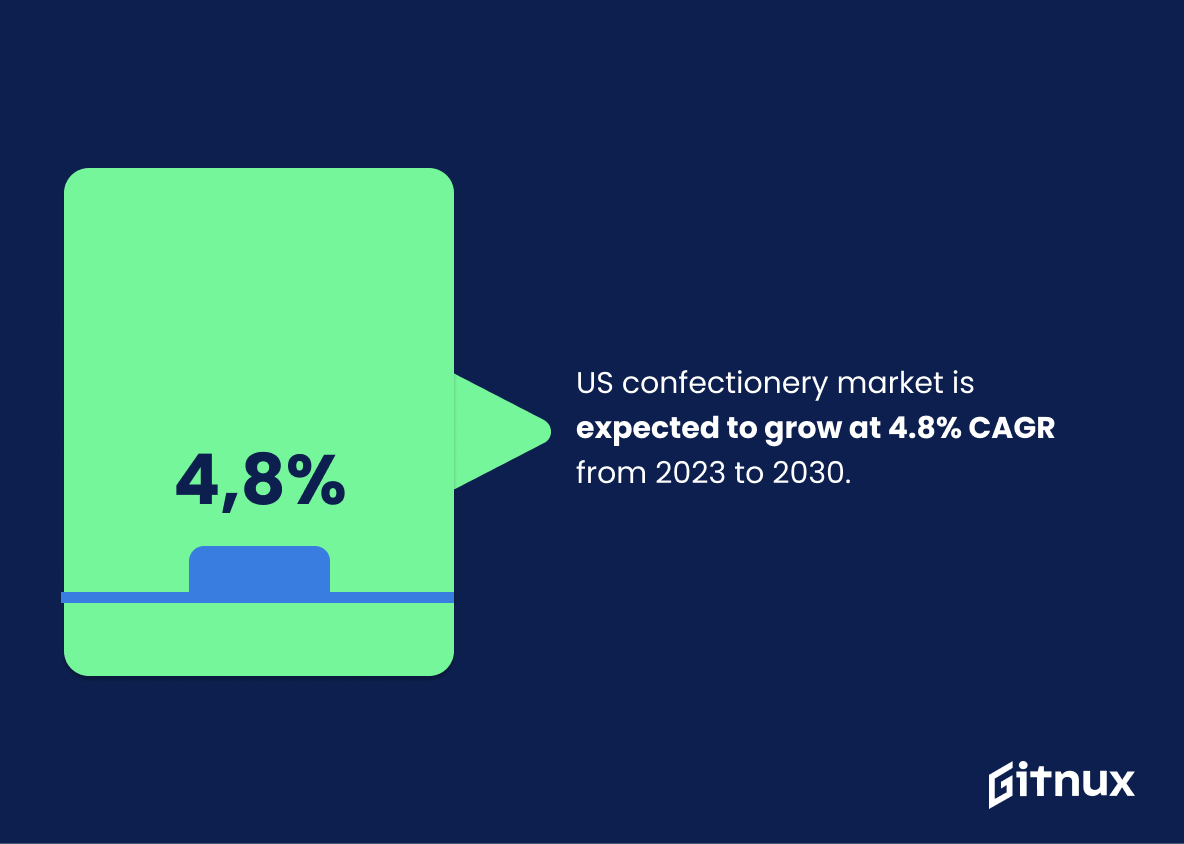Candy is a beloved treat that’s enjoyed by people of all ages. Whether it’s a special occasion or just a random craving, candy is always a popular choice. But how much candy do people actually buy?
In this blog post, we’ll take a look at some interesting candy sales statistics and explore the impact that candy has on the economy. We’ll also discuss the different types of candy that are most popular and how they’ve changed over time. So grab a sweet treat and let’s dive into the world of candy sales statistics.
Candy Sales: The Most Important Statistics
The chocolate confectionary market is expected to grow from 0.18 trillion USD in 2014 to 1.35 trillion USD in 2026, with an average per person revenue of $1.11 tn in 2023 and an annual growth rate of 4.77%.
Germany’s confectionary market size is expected to grow from 31.92 billion in 2021 to 44.36 billion by 2029 at a CAGR of 4.2%.
Candy Sales Statistics Overview
Hershey Company e-commerce sales grew 120% in March 2020 compared to 60% in January 2020, and the global candy market is expected to reach $81,296 million by 2027.
The Hershey Company is experiencing significant growth in e-commerce sales, which is indicative of the larger trend of growth in the global candy market.
The global confectionary market size is projected to grow from USD 194,37 billion in 2021 to USD 242,53 billion in 2028 at a CAGR of 3,8%.
It shows that the global confectionary market is growing and consumers are increasingly shifting towards luxurious and premium chocolates and gums.
The US is the largest candy market in the world, followed by China, the UK, Indonesia and Pakistan, with Ethiopia recording the highest rate of growth.
The global candy market is expected to grow at a CAGR of 3.94% from 2022-2029, with the highest growth in Middle East and Africa, followed by South America, Asia Pacific, Europe, and North America.
There is an expected growth of the candy market over the next 7 years, which can help inform business decisions and investments in the candy industry.
The chocolate confectionary market is expected to grow from 0.18 trillion USD in 2014 to 1.35 trillion USD in 2026, with an average per person revenue of $1.11 tn in 2023 and an annual growth rate of 4.77%.
This gives an indication of the potential growth of the chocolate confectionary market and the potential revenue that can be generated from it. It also provides insight into the average per person revenue, which can be used to inform marketing strategies and product development.
Germany’s confectionary market size is expected to grow from 31.92 billion in 2021 to 44.36 billion by 2029 at a CAGR of 4.2%.
This growth is likely due to increasing consumer awareness of the health benefits of chocolate, which could be a great opportunity for candy sales in Germany.
72-99% of Americans view chocolate and candy as an emotional part of their well-being and purchase it at least once a year, with 78% believing it is a great American tradition.
This indicates that candy sales are likely to remain strong and that companies should continue to invest in marketing and product development to meet consumer needs.
The US confectionery market size is expected to grow at a CAGR of 4.8% from 2023 to 2030. This statistic matters in the context of candy sales statistics because it provides insight into the potential growth of the industry over the next seven years.
22% of respondents chose Reeses as their favorite Halloween candy, followed by KitKat at 15% and Snickers at 14%.
Chocolate is the most popular type of candy for Halloween, and that candy sales tend to increase during the Halloween season.
M&Ms was the most popular candy brand in the US in 2022, with 79% of the market share, followed by Godiva (67%) and Milka (25%).
This provides insight into the current market share of the top three candy brands in the US.
Conclusion
In conclusion, candy sales statistics provide a great insight into the candy industry. They can be used to identify trends, measure performance, and make informed decisions about the future of the industry.
With the right analysis, candy sales statistics can be used to make informed decisions about the future of the candy industry.
References
1 – https://www.mordorintelligence.com/industry-reports/candy-market#:~:text=The%20Global%20Candy%20market%20was,forecast%20period%20of%202022%2D2027.
2 – https://www.fortunebusinessinsights.com/industry-reports/confectionery-market-100542
3 – https://www.indexbox.io/search/candy-market/
4 – https://www.databridgemarketresearch.com/reports/global-candy-market
5 – https://www.statista.com/outlook/cmo/food/confectionery-snacks/confectionery/worldwide#:~:text=Revenue%20in%20the%20Confectionery%20segment,(CAGR%202023%2D2027).
6 – https://www.globenewswire.com/news-release/2022/12/16/2575590/0/en/Confectionery-Market-is-expected-to-grow-from-USD-300-billion-in-2021-to-USD-443-23-billion-by-2029-GreyViews.html#:~:text=India’s%20confectionery%20market%20size%20was,3.2%25%20from%202022%20to%202029.
7 – https://candyusa.com/our-industry/#:~:text=Altogether%2C%20the%20confectionery%20industry%20contributes,of%20the%20fifty%20U.S.%20states.
8 – https://www.grandviewresearch.com/industry-analysis/us-confectionery-market#:~:text=The%20U.S.%20confectionery%20market%20size,4.8%25%20from%202023%20to%202030.
9 – https://www.clickondetroit.com/news/2022/10/21/whats-the-most-popular-halloween-candy-in-the-us/#:~:text=The%20coupon%20website%20says%2022,Snickers%20in%20third%20at%2014%25.
10 – https://www.statista.com/statistics/1353049/most-popular-candy-brands-in-the-us/#:~:text=In%202022%2C%20M%26M’s%20were%20the,was%20Godiva%2C%20with%2067%20percent.
